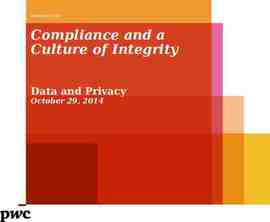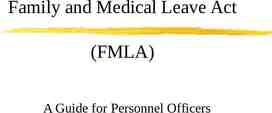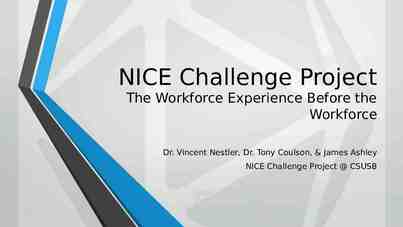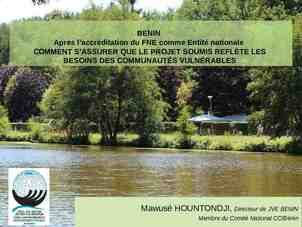KR Testing Strategy An introduction into technical and
24 Slides664.27 KB

KR Testing Strategy An introduction into technical and functional testing

Validate Iterative system testing cycles; Validating and testing the system and processes Initiate Plan Design Configure Validate Transition Go Live Realization Stabilization This is the Testing Phase 2

Part 1 Part 2 Testing Objectives: What is testing and why do it? Testing Scope: What is being tested and who are the testers? Part 3 Testing Timeline: When is testing happening?

Part 1 Part 2 Testing Objectives: What is testing and why do it? Testing Scope: What is being tested and who are the testers? Part 3 Testing Timeline: When is testing happening?

Testing Objectives What is being tested and why? Testing is a method used to determine whether each of the project’s software deliverables meet the defined quality standards established for the software development project. Goal is production-ready software.

Testing Case Design and Traceability What are test cases? As business process work was conducted, it created business process requirements. These requirements were used to develop user stories, which are used to develop use cases. Use cases are then used to develop test cases and test scenarios, which are then used in user acceptance testing. Having these various focuses, allows the system to be tested in a variety of ways and traced back to the original business requirements. After all, systems are tools that should be designed to support business (not the other way around).

Part 1 Part 2 Testing Objectives: What is testing and why do it? Testing Scope: What is being tested and who are the testers? Part 3 Testing Timeline: When is testing happening?

Testing Scope Kuali Research System What is being tested? COEUS DATA MIGRATION SCRIPTS KR APPLICATION CONFIGURATION USER INTERFACE FOR: PROPOSAL DEVELOPMENT, INSTITUTIONAL PROPOSAL, NEGOTIATION, AWARD, AND SUBAWARD MODULES CUSTOM FIELDS, MODIFICATIONS AND WORKFLOWS KUALI REPORTS DATA INTEGRATIONS KUALI DASHBOARD UCSD DATA ANALYTICS OF KR DATA

Testing Scope Levels of testing User Acceptance Performance Test Unit Testing Kuali Research Test Strategy Business Process Testing System Integration Testing Data Migration Functional Testing

Testing Scope Levels of testing User Acceptance Performance Test Unit Testing Kuali Research Test Strategy Business Process Testing System Integration Testing Data Migration Functional Testing Testing Strategy: Scope Purpose Assumptions Overall Approach Critical Success Factors Metrics Test and Defect Management

Testing Scope Levels of testing User Acceptance Performance Test Testing Plan: Test Objectives Test Assumptions Test Principles Test Scope Test Usability Test Criteria Testing Cases: Design Development Execution Test/Defect Management Unit Testing Kuali Research Test Strategy Business Process Testing System Integration Testing Data Migration Functional Testing Testing Strategy: Scope Purpose Assumptions Overall Approach Critical Success Factors Metrics Test and Defect Management

Testing Scope Levels of testing User Acceptance Performance Test Each level of testing will have at least 2 phases, with the exception of user acceptance testing Unit Testing Kuali Research Test Strategy Business Process Testing System Integration Testing Data Migration Functional Testing

Testing Scope Levels of testing Proves an individual unit of work functions as expected. This is often associated with technical object testing, although it can also be applied to a configuration unit of work. User Acceptance Performance Test Unit Testing Kuali Research Test Strategy Business Process Testing System Integration Testing Data Migration Functional Testing Ex: specific and detailed technical tests (think lines of code and individual values)

Testing Scope Levels of testing User Acceptance Performance Test Unit Testing Kuali Research Test Strategy Business Process Testing System Integration Testing Data Migration Functional Testing Determines the accuracy of data converted from the Coeus solution to the KR solution. Developing the code required to migrate and transform data from one solution to another is an important task; however, checking the results and verifying the accuracy of the data should not be trivialized. Ex: making sure data shows up where it’s meant to be

Testing Scope Levels of testing User Acceptance Performance Test Unit Testing Kuali Research Test Strategy Business Process Testing System Integration Testing Data Migration Functional Testing Is conducted to test specific KR application’s modules and data integration’s functionality and is not expected to test every discrete permutation of possible values. Discrete test scenarios will be executed to validate existing and new functionality that was introduced into the KR solution are working as designed Ex: testing to see if data and values are functions as intended

Testing Scope Levels of testing User Acceptance Performance Test Kuali Research Test Strategy Business Process Testing Verifies the flow of data within the KR solution. SIT will also validate the flow of data between the KR solution and UCSD systems. Ex: making sure the “hook ups” are working and that data is flowing correctly Unit Testing System Integration Testing Data Migration Functional Testing

Testing Scope Levels of testing User Acceptance Performance Test Verifies that the KR application can produce comparable results to the Coeus application and that all necessary business functions are incorporated into the KR solution. Unit Testing Kuali Research Test Strategy Business Process Testing Data Migration Ex: making sure business processes can be performed as planned System Integration Testing Functional Testing

Testing Scope Levels of testing Evaluates the compliance of a system with specified performance requirements, specifically the speed and efficiency in processing transactions. Estimates the effort to test entering or viewing on-line transactions, processing batch jobs, and generating reports or interfaces. (Network response time, Data Integration response time, Online response time). Ex: testing to ensure the system is working fast enough User Acceptance Performance Test Unit Testing Kuali Research Test Strategy Business Process Testing System Integration Testing Data Migration Functional Testing

Will be focused on confirming the functional requirements and business processes documented have been met by the KR solution. Testing Scope Levels of testing The objective of UAT is to prove that the system does work to the satisfaction of the end user community. User Acceptance Performance Test Unit Testing Kuali Research Test Strategy Business Process Testing System Integration Testing Data Migration Functional Testing

Levels of Testing Description Phases Testers Unit Test Proves an individual unit of work functions as expected. This is often associated with technical object testing, although it can also be applied to a configuration unit of work. Ongoing KR Technical Team UCSD Technical Team In Progress – Dec 2019 Data Migration Test Determines the accuracy of data converted from the Coeus solution to the KR solution. Developing the code required to migrate and transform data from one solution to another is an important task; however, checking the results and verifying the accuracy of the data should not be trivialized. Phase 1 Test Cycle 1 - DONE Test Cycle 2 - DONE Phase 2 Test Cycle 1 – In Progress Test Cycle 2 – Not Started Test Cycle 3 – Not Started Phase 3 Test Cycle 1 - Not Started Test Cycle 2 – Not Started UCSD Technical Team UCSD Configuration Team UCSD Test Team UCSD SMEs KR Consultants In Progress – Jul 2019 Functional Test Is conducted to test specific KR application’s modules and data integration’s functionality. Functional testing is not expected to test every discrete permutation of possible values. The UCSD Test Team will perform this testing by entering values into the KR application to ensure those values are properly processed and flow to the boundaries of the entire Kuali solution. Discrete test scenarios will be executed to validate existing and new functionality that was introduced into the KR solution are working as designed Phase 1 Phase 2 UCSD Technical Team UCSD Configuration Team UCSD Test Team UCSD SMEs KR Consultants Anticipated May – Jun 2019 System Integration Test (SIT) Verifies the flow of data within the KR solution. SIT will also validate the flow of data between the KR solution and UCSD systems. Phase 1 Phase 2 UCSD Technical Team UCSD Configuration Team UCSD Test Team UCSD SMEs KR Consultants Anticipated Jun – Jul 2019 Business Process Test Verifies that the KR application can produce comparable results to the Coeus application and that all necessary business functions are incorporated into the KR solution. To increase the accuracy/efficiency of the Business Process Testing process, the UCSD Test Team will utilize an automated test tool to assist with performance of business process testing. Phase 1 Phase 2 UCSD Technical Team UCSD Configuration Team UCSD Test Team UCSD SMEs KR Consultants Anticipated Jul – Aug 2019 Performance Test Evaluates the compliance of a system with specified performance requirements, specifically the speed and efficiency in processing transactions. Estimates the effort to test entering or viewing on-line transactions, processing batch jobs, and generating reports or interfaces. (Network response time, Data Integration response time, Online response time) Phase 1 Phase 2 UCSD Technical Team UCSD Test Team KR Consultants Anticipated Aug – Sept 2019 User Acceptance Test (UAT) Will be focused on confirming the functional requirements and business processes documented have been met by the KR solution. This testing will also focus on the identified business flows and processes that the integrated systems will support, including the inbound and outbound exchange of data and the smooth and timely flow of information. Unlike earlier testing, the objective of UAT is to prove that the system does work to the satisfaction of the end user community. The level of testing undertaken in Functional Test and SIT should ensure that UAT demonstrates a fully working system in a way that builds the confidence of the end users. There will be some errors, either from use by unfamiliar operators using data entry or key sequences not imagined by the project team, or test cases/scenarios not attempted during earlier testing cycles, but the level of errors should not impact end user confidence adversely. This means that any problems reported should be handled in an efficient and transparent manner. There will be two UAT cycles. The first UAT cycle evaluates the preproduction environment, user training, the user and support documentation, and support infrastructure. UAT testers will execute various test scenarios using production ready security profiles. The second UAT cycle will incorporate corrections to errors discovered during testing, updates to user and support documentation and final sign-off. User Acceptance UCSD identified staff level users (line staff) UCSD identified management level users (managers) KR Consultants (support to testers only) UCSD Test Team (support to testers only) UCSD Process Lead Anticipated Oct – Nov 2019 Phase 1: to identify any blocking or high severity defects and is expected that it might be necessary to use some work-arounds in order to execute all the test cases in the first test cycle. Phase 2: to confirm resolutions to previously identified defects, execute test cases that previously required work-arounds in the first test cycle, correct gaps in the test cases which were identified during execution in the first test cycle. Status

Testing Teams Who is testing? Testing Team Member UCSD Technical Team Robert Dias, Solutions Architect UCSD Configuration Team Jason DeFay, Configuration and Business Process Lead Sunny Kochhar, Business Analysis and Configuration Support Evan Kerry, Business Analysis and Configuration Support UCSD Test Team David Edmondson, Testing Lead Long Ton-That, Tester Bill Sweetman, Director Financial Information Systems UCSD Process Lead Jason DeFay, Configuration and Business Process Lead KR Technical Team Terry Durkin, KualiCo – Technical Lead KR Consultants Whit Baird, KualiCo – Project Lead Kat Szulc, KualiCo – Functional Lead Kaci Foster, KualiCo – General Manager UCSD SMEs Business Process SMEs UCSD identified staff level users (line staff) To be named UCSD identified management level users (managers) To be named

Part 1 Part 2 Testing Objectives: What is testing and why do it? Testing Scope: What is being tested and who are the testers? Part 3 Testing Timeline: When is testing happening?

Testing Roadmap Draft This outlines the high level strategy and is subject to change Testers: UCSD Technical Team UCSD Configuration Team UCSD Test Team UCSD Process Lead UCSD SMEs UCSD identified staff level users (line staff) UCSD identified management level users (managers) KR Consultants KR Technical Team Rev 3.5.2019

esr.ucsd.edu For questions contact Nicole Joyce at [email protected] or 858-534-9112.






